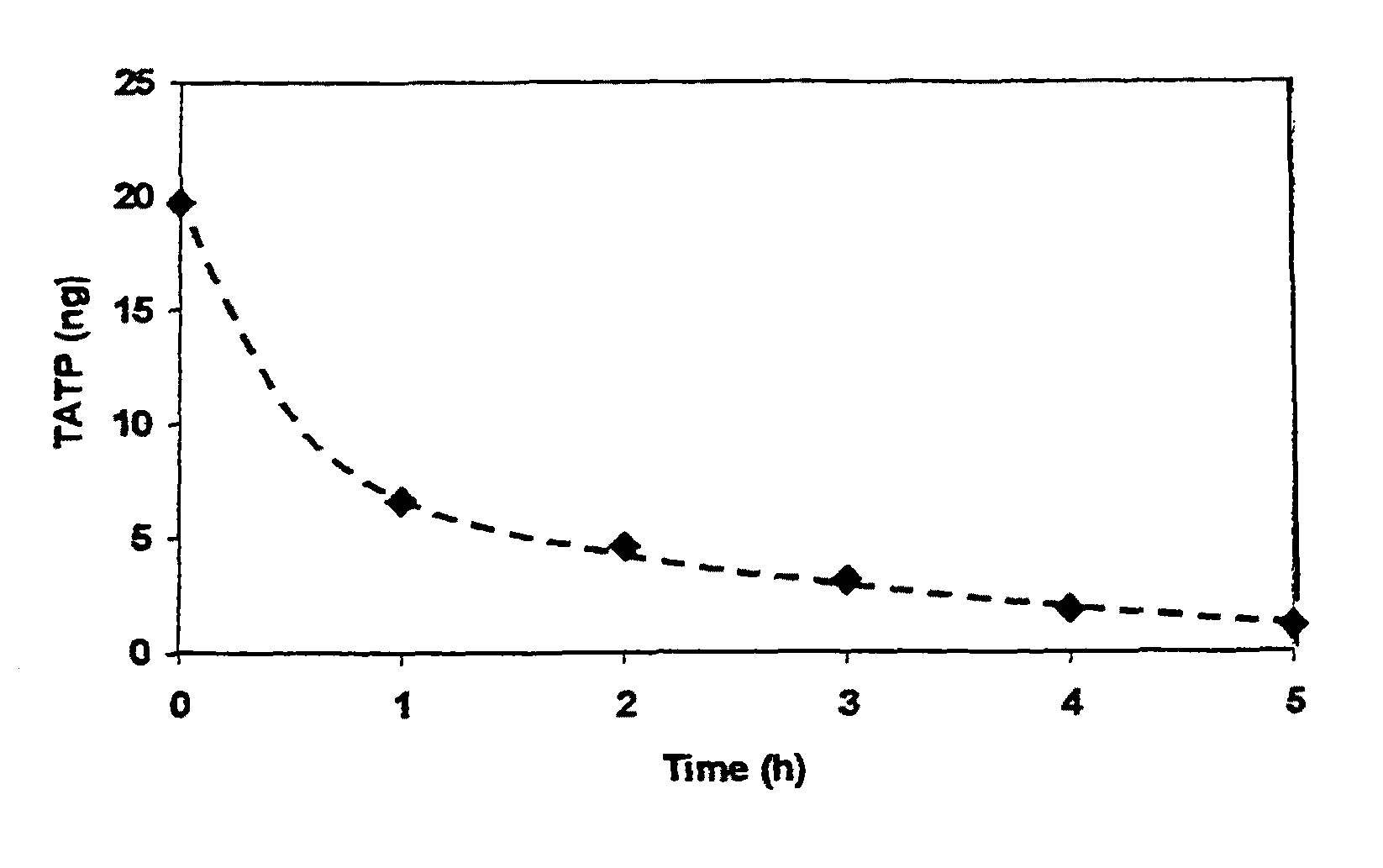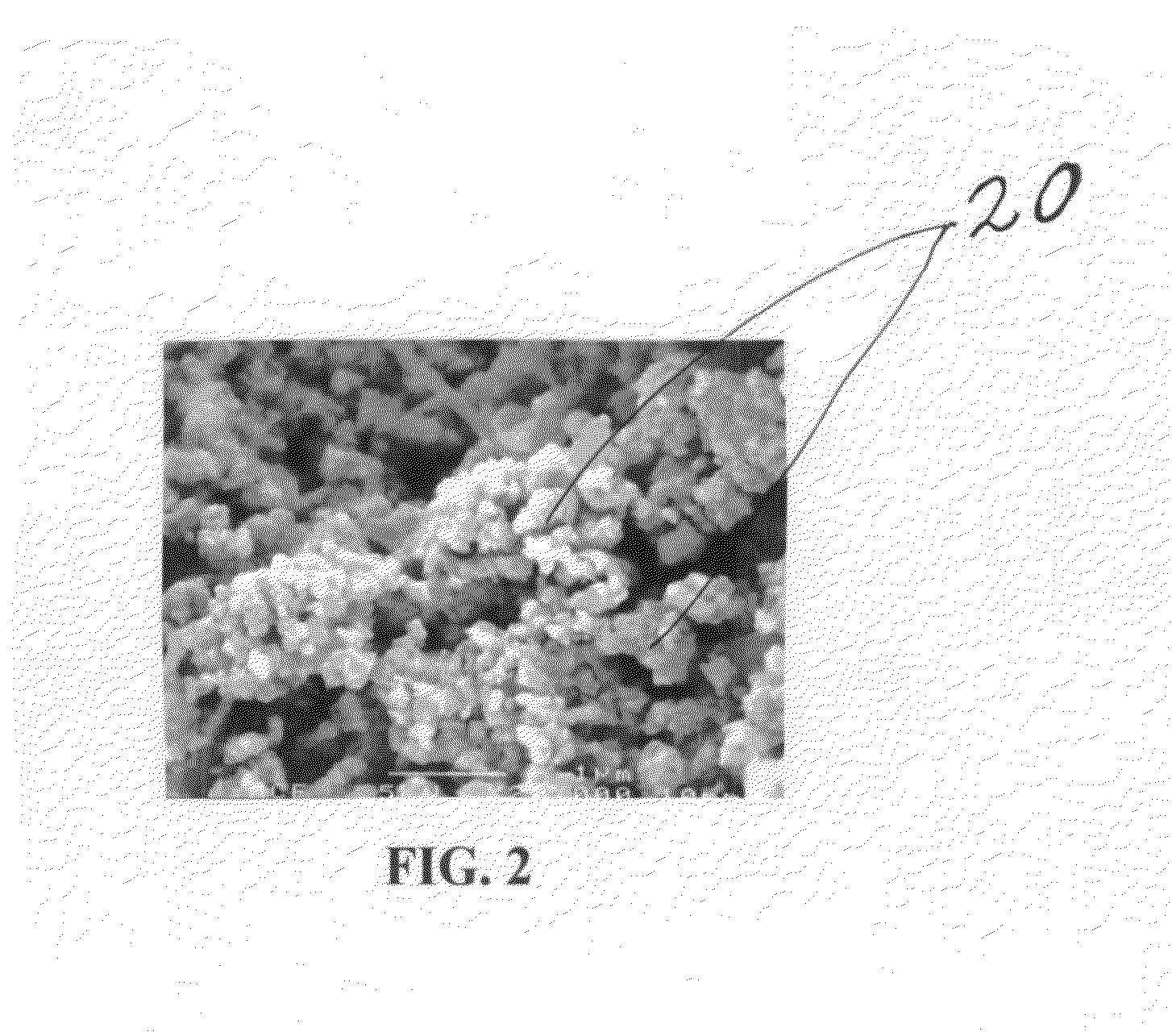Safe, in situ methodologies for the destruction of triacetone triperoxide and other explosive peroxides
a triacetone triperoxide and explosive peroxide technology, applied in the field of explosive material degradation, can solve the problems of dangerous explosives, easy preparation and detection, and easy exposure to organic peroxide, and achieve the effect of safe degradation of triacetone triperoxide (tatp) and other explosive peroxides
- Summary
- Abstract
- Description
- Claims
- Application Information
AI Technical Summary
Benefits of technology
Problems solved by technology
Method used
Image
Examples
example 1
Emulsion Formulation
A preferred emulsion formulation, wherein all percents are by weight, consists of approximately 45.1% water, approximately 37.3% organic phase or solvent, approximately 1.3% food-grade surfactant, such as sorbitan trioleate (SPAN 85), and approximately 16.3% nanosize metal particles assembled at room temperature (approximately 25° C.). Emulsion preparation consists of adding 100.0 mL of water to a high speed blender then adding 36 g of metal particles to the water while running the blender under a nitrogen blanket. The surfactant (2.94 g) is dissolved in 82.4 g of organic phase (such as, vegetable oil, d-limonene, or toluene). The organic phase is then slowly added to the aqueous phase while running the blender at maximum speed. After the organic phase has been added, the blender is allowed to run for an additional 5 minutes until a uniform emulsion has been produced. The emulsion is stored under a nitrogen blanket until it is ready for use.
example 2
Procedure for Testing EZVM for Degradation of TATP Via a Toluene Emulsion
The following procedure was used to measure the rate of degradation of TATP crystals by our reactive emulsion systems that contain nanometer or micrometer size metal particles. The metal particles include iron and magnesium. The hydrophobic membrane of the emulsion droplet is made up of toluene and a nonionic surfactant. The inner part of the emulsion contains the metal particles and a hydrophobic phase consisting of different concentrations of methyl alcohol and water.
FIG. 6 is a schematic of the set up for measuring the rate of degradation of TATP. A capped glass vial 60 is used that has headspace 62 for sampling TATP using the solid-phase microextraction (SPME) fiber and the gas chromatography-mass spectrometry (GC-MS) or gas chromatography—flame ionization detector (GC-FID) method. Vial 60 contains a water continuum 64, reactive emulsion droplets 66, and less than 10 milligrams of TATP crystals 68. Change i...
example 3
Degradation Testing of TATP by Reactive Emulsion Systems
Various emulsion systems were tested for TATP degradation ability by using the following procedure. A 100 mg portion of TATP was placed in a 10 mL crimp top vial. To the vial was added 5 mL of test emulsion. The vial was sealed with a septa and a hypodermic needle was inserted through the septa and connected to a gas bubbler. For each test emulsion 5 separate vials were set up. The vials were placed on a low velocity shaking platform and the bubblers observed for gas generation, both rate and quality. After selected time intervals, each vial was visually analyzed for TATP disappearance and one vial at each selected time was opened up and the contents analyzed for the presence of TATP and its degradation products. Initial time periods were established based upon the rate of visual disappearance of TATP. For example, if all of the TATP crystals were gone after one hour then it was necessary to sample every 15 minutes. On the othe...
PUM
 Login to View More
Login to View More Abstract
Description
Claims
Application Information
 Login to View More
Login to View More - R&D
- Intellectual Property
- Life Sciences
- Materials
- Tech Scout
- Unparalleled Data Quality
- Higher Quality Content
- 60% Fewer Hallucinations
Browse by: Latest US Patents, China's latest patents, Technical Efficacy Thesaurus, Application Domain, Technology Topic, Popular Technical Reports.
© 2025 PatSnap. All rights reserved.Legal|Privacy policy|Modern Slavery Act Transparency Statement|Sitemap|About US| Contact US: help@patsnap.com



